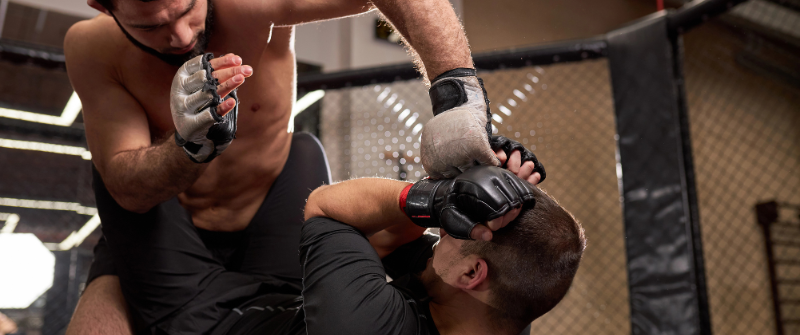
- by NEXO Team
- August 20, 2025
Functional training gyms utilize equipment like TRX systems, kettlebells, sleds, and turf lanes to support a wide range of workouts. These tools see heavy daily use and are often pushed to their limits, which makes them much more vulnerable to wear, damage, and unexpected accidents. Since equipment represents a significant investment, protecting it should be part of any smart business strategy. Equipment insurance helps reduce downtime, protect your bottom line, and keep operations running when something goes wrong, and understanding how it works starts with knowing the risks and coverage options for your space.
Why Equipment Insurance Is Essential for Functional Training Gyms
Functional training gyms put a lot into the equipment that makes their space work. Turf lanes, suspension trainers, sleds, and rigs shape the layout of the gym and how workouts are delivered. When one of those pieces breaks or wears down, it creates a major inconvenience, as it disrupts your schedule, limits what you’re able to offer, and impacts the experience your members are used to.
Unlike traditional machines, functional training equipment tends to take more of a beating. Kettlebells are dropped, sleds are dragged, and turf sees constant movement. Outdoor areas or wall-mounted installations add even more exposure and complexity. If something gets damaged, stolen, or simply stops working, equipment insurance can help you recover without ever missing a beat. It’s a practical way to protect the gear your gym relies on every day and avoid expensive interruptions when the unexpected happens.
Common Risks to Functional Training Equipment
Functional training equipment is built for movement, intensity, and repetition, but that kind of use naturally comes with risk. Between group classes, high-traffic areas, and mixed environments, there are plenty of ways equipment can get damaged, lost, or worn down faster than expected. These are a few of the most common risks to keep in mind:
Heavy Wear and Tear
Kettlebells, sandbags, and sleds are designed to be durable, but group use speeds up how quickly they wear out. Daily use across multiple classes may lead to fraying, cracking, or loss of structural integrity over time.
Environmental Damage
Turf lanes and outdoor rigs can take a hit from weather or temperature changes. Moisture, sun exposure, and debris all contribute to long-term damage.
Accidental Damage
Dropped weights, failed anchor points, or impact against rigs can cause sudden, costly issues. Even one incident during a class could take a piece of equipment out of commission completely.
Theft or Vandalism
Smaller items like medicine balls, dumbbells, or battle ropes are easy to grab and often left unattended. Without proper storage or security, these are at a higher risk of going missing.
Also Read: From Kettlebells to Turf Work: Functional Training Risk Profiles
Types of Insurance Coverage for Equipment
Protecting gym equipment starts with choosing coverage that actually fits the way your space operates. Functional training gyms often rely on a mix of fixed gear, portable tools, and specialty installations, so it’s important to have insurance that reflects that range. Here’s a look at some of the main coverage options and how they support different parts of your setup:
Property Insurance
This covers equipment that stays inside your facility. If something is damaged by fire, flooding, or another covered incident on-site, property insurance helps with repair or replacement costs.
Inland Marine Coverage
For gear that travels, this type of coverage follows your equipment wherever it goes. It’s useful for outdoor bootcamps, off-site events, or anything that requires moving items outside of your main location.
Business Interruption Coverage
If damaged equipment forces you to pause operations, this coverage helps recover lost revenue. It’s especially valuable when classes are canceled or space is temporarily unusable.
Comprehensive Fitness Facility Insurance
This bundled option wraps liability and equipment protection into one policy, giving you broader coverage designed specifically for fitness businesses.
Coverage Tips for Functional Training Spaces
Having the right coverage depends on how well your equipment is documented. Keep an up-to-date inventory with receipts and photos, so you have a clear record if something gets damaged or goes missing. It’s also important to understand how your policy values equipment, as some will cover the full replacement cost, while others only reimburse based on depreciated value.
Installations like turf lanes, wall-mounted rigs, and custom racks might not be covered automatically, so double-check that they’re included. If you host outdoor classes or travel with gear, make sure your policy extends to equipment used off-site. Coverage gaps could catch you off guard if your gear isn’t protected during transport or events.
Also Read: From Olympic Lifting to Bootcamps: Covering All Angles of Functional Fitness
Reviewing and Updating Your Policy
Insurance coverage isn’t something you can just set and forget. Any time you bring in new equipment, like rowers, air bikes, or lifting platforms, it’s worth checking that your policy reflects those additions. The same goes for changes to your space. Expanding into an outdoor area or opening up a second training room shifts your risk profile and may require updated coverage.
Even without major changes, it’s a good idea to review your policy once a year. Inventory may grow slowly over time, and replacement costs often change. A quick check-in helps keep your coverage aligned with what you actually have on the floor. That way, if something unexpected does happen, you’re not left underinsured or caught off guard.
Equipment Protection Benefits
Protecting your equipment helps you stay ahead of disruptions that impact your day-to-day operations. When something breaks, gets damaged, or goes missing, having coverage means you’re not left scrambling to fix it or cancel classes. It gives you a clear path to recover quickly and keep things moving without unexpected financial strain. That kind of backup makes a major difference when you're juggling a full schedule and relying on gear to perform every day.
It also reinforces how your gym is perceived. Landlords, brand partners, and members all pay attention to how a space is run. A well-managed facility with proper coverage reflects professionalism and preparedness. It shows you're committed to protecting your investment and running a business that’s built to last. That level of thoughtfulness strengthens relationships and gives you more confidence in how you show up for your clients and partners.
Conclusion
Protecting your equipment with the right insurance helps reduce downtime, avoid unexpected costs, and keep your functional training space running without interruption. If you’ve added new gear or expanded your space, it’s a good time to review your policy or speak with a fitness insurance specialist. NEXO makes this process easy. We offer insurance products built specifically for gyms and provide knowledgeable, responsive support to help you get the coverage you need. Contact us to explore your options and apply for coverage today.
Categories
Fill out a short form to contact us with your questions or to receive a customized quote.
Recent Posts
-
 NEXO’s Affinity Program: How Fitness Suppliers and Associations Can Partner for Profit and Protection
December 5, 2025
NEXO’s Affinity Program: How Fitness Suppliers and Associations Can Partner for Profit and Protection
December 5, 2025 -
%20(1).png) How to Insure an MMA Gym Without Paying for Coverage You Don’t Need
December 5, 2025
How to Insure an MMA Gym Without Paying for Coverage You Don’t Need
December 5, 2025 -
 Mastering Liability for Jiu-Jitsu Tournaments and Martial Arts Events
December 5, 2025
Mastering Liability for Jiu-Jitsu Tournaments and Martial Arts Events
December 5, 2025 -
 From Zen to Zoning: What Every Yoga and Pilates Studio Owner Should Know Before Signing a Lease
December 5, 2025
From Zen to Zoning: What Every Yoga and Pilates Studio Owner Should Know Before Signing a Lease
December 5, 2025 -
%20(1).png) Why Your Referral & Loyalty Program Can Impact Your Insurance Rates
December 5, 2025
Why Your Referral & Loyalty Program Can Impact Your Insurance Rates
December 5, 2025
